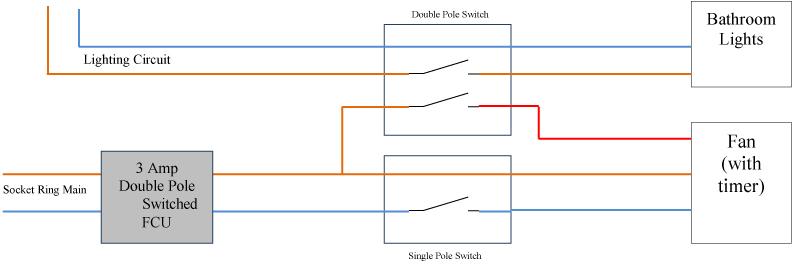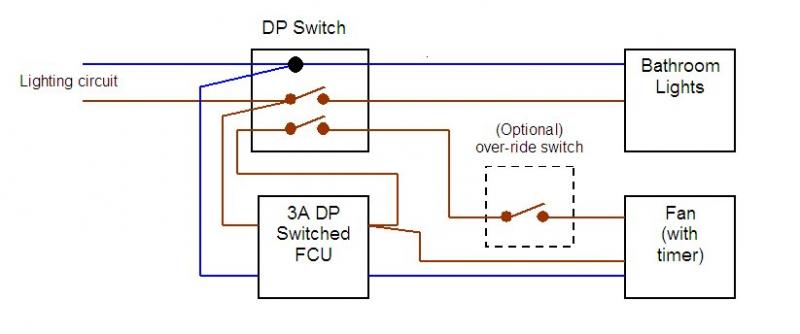I've got a bathroom fan with a timer. The best place for a 3A isolating FCU is very near a ring main, but I'd like it to be controlled with the lightswitch, with a switch next to it offering over-ride of the fan.
This will work electrically:
But is it ok with regs? Will they be ok with me putting a ring main in one pole, and the lighting circuit in another pole? I could power the fan off the lighting circuit but it'd be an extra, long, fiddly run of cable. Much easier this way.
Do you think this will get signed off by Building Control's electricians?[/img]
This will work electrically:
But is it ok with regs? Will they be ok with me putting a ring main in one pole, and the lighting circuit in another pole? I could power the fan off the lighting circuit but it'd be an extra, long, fiddly run of cable. Much easier this way.
Do you think this will get signed off by Building Control's electricians?[/img]




